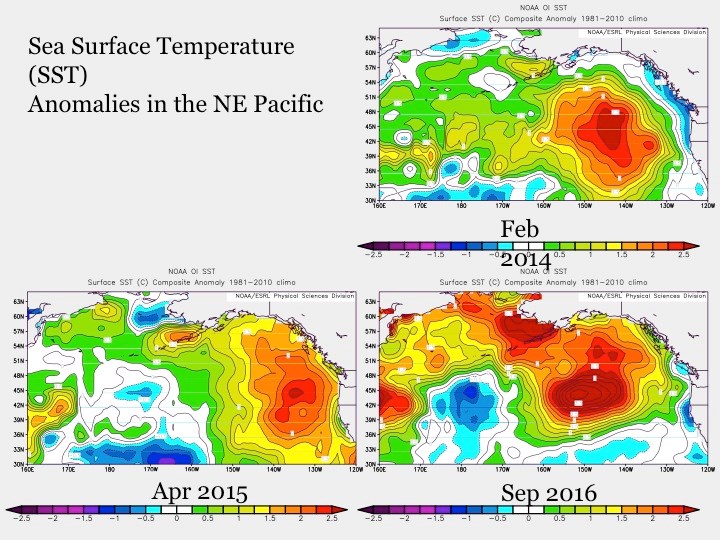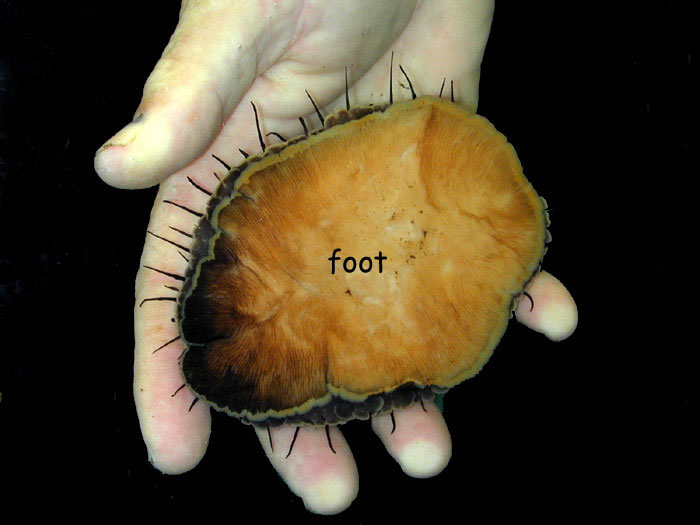 |
| Hello again! |
Hello, science enthusiasts! Hello,
animal lovers! Hello, conservationists! Here's your second stream of
bubbles containing interesting information from this little corner of
the California coastline. I'm Shelby, and I'm here to offer some
insight on the health and function of some of the most important
features of Northern California's coastal ecosystems.
I left the last post talking
fairly vaguely about the kind of damage I learned has been done to
Sonoma and Mendocino county's kelp forests. I had heard some stuff
about California Fish and Wildlife considering closing the red
abalone fishing in 2016, but I didn't know why it was going to
happen. I knew people were mad about it, but I couldn't form an
opinion or view on the issue without more information. I had other
stuff on my mind anyway; I was going in to my last year as an
undergrad, I was going onto dialysis before my second kidney
transplant...I had a lot to deal with. After graduating college and
received my second transplant, I finally had the time and mind to
start focusing on the big picture. I had time to set up a volunteer
position to prepare me for grad school and a career as a scientist.
But after entering that field, seriously, for the first time, I wish
I had known more beforehand. I wish I had been informed.
 |
| A timeline of events that, compounded together, created an environment unsuitable for kelp forests. Source: https://cdfwmarine.wordpress.com/2016/03/30/perfect-storm-decimates-kelp/ |
The reason Fish and Wildlife
were threatening to—and eventually did—close the abalone fishery,
is because something scientists referred to as a “perfect storm”
of environmental events had wreaked havoc on Sonoma and Mendocino
county's kelp forest communities, unbalancing the food web to
extremes (Catton, Rogers-Bennett, 2016). The events can be outlined
as follows:
 |
| Here's an infrared map of HABs in California. Source: https://phys.org/news/2018-09-scientists-genetic-basis-algal-blooms.html |
2011: Harmful Algal Bloom. Harmful
algal blooms happen when the water is too stagnate and warm to
properly circulate nutrients, trapping them in areas and encouraging
the growth of poisonous phytoplankton (microscopic algae). The H.A.B
in Sonoma county killed off large populations of marine
invertebrates.
 |
| A sunflower sea star showing symptoms of wasting disease. Source: https://phys.org/news/2016-10-survey-impact-sea-star-disease.html |
2013: Seastar Wasting Disease.
Wasting disease is an illness that has been effecting sea stars and
sunflower stars along the west coast of North America since 2013.
It's a syndrome characterized by lesions and degradation of the
tissues until the body and limbs melt apart; fragment. It can cause
death within days. Large swaths of the North American sea star and
sunflower sea star populations have died off because of this
disease. As of now, the populations have not recovered in any
substantial number, and the nature of the pathogen (microbe) causing
the disease is still unknown. It is most likely aggravated by warm
water.
 |
| Without sunflower stars to keep their numbers down, purple sea urchins have essentially taken over in areas where kelp normally grows. Source: https://noyocenter.org/help-the-kelp/ |
2014-Present: Purple Urchin Boom.
Without the presence of their primary predator, purple sea urchins
have been reproducing unimpeded since 2014, reaching 60 times their
normal density (Catton, Rogers-Bennett, 2016). They're responsible
for essentially mowing down Northern California's kelp forests.
 |
| Here's an infrared map of the development of the Blob from 2014 to 2016. Source: https://www.nps.gov/articles/theblob.htm |
2014-Present: Warm Water “Blob”:
Northern California started to see unprecedented warming in 2014,
starting with the formation of what was known as the “Blob”; a
mass of stagnate, unusually warm water that refused to circulate
with the usual currents.
 |
| That is a lot of hot water. Source: http://blogs.discovermagazine.com/imageo/2015/10/14/godzilla-the-blob-son-of-blob-el-nino-reality-check/#.XEQPGlxKhPY |
2015-Present: El Niño:
The addition of an El Niño,
or a change in ocean temperature circulation on the currents,
compounded the warmth to California's coast. This compounded with the Blob to create giant bodies of warm water. Both invertebrates and
kelp are very sensitive to changes in water temperature, and warm
water doesn't hold nutrients nearly as well as cold water. Kelp
doesn't have a root system, so it relies on the surrounding water
for their nutrient intake.
This tumbling of bad events over the
past few years has radically altered the structure of Sonoma and
Mendocino county's kelp forest food webs. I'll talk about this in
more detail in the next post, but this extreme shift in environmental
conditions has caused what is called a “trophic cascade”, meaning
the tightly functioning system has wavered and collapsed. The lack of
a keystone species allowed the purple urchins to multiply and eat at
an uncontrolled rate, changing the kelp forests into what are known
as “urchin barrens”.
 |
| This is what an urchin barren looks like; no food, no shelter, barely any diversity. Just bare rock covered in urchins mowing down anything that tries to grow, leaving nothing for the other animals that live there. Source: https://cdfwmarine.wordpress.com/2016/03/30/perfect-storm-decimates-kelp/ |
These are essentially the complete opposite
of kelp forests; large expanses of mostly barren rock and sand where
only hard pink algae—called crustose coralline algae—can grow.
Urchins cover these rocks, eating anything and everything they
possibly can. There's no food and no shelter for the other
invertebrates and fish inhabiting these areas. The red urchins people
harvest have poor egg quality, and the red abalone people dive for
are shrunken and weak from starvation.
 |
| This is what a healthy abalone looks like, at least from the bottom. Their strong foot clings to the rocks, allowing them to withstand wave action and resist attack from predators. Source: https://www.marinebio.net/marinescience/06future/abintro.htm |
 |
| This is what an abalone looks like when its starving; shriveled and weak, unable to cling to rocks to protect themselves from predators. Source: https://cdfwmarine.wordpress.com/2016/03/30/perfect-storm-decimates-kelp/ |
I was stricken when I realized this
was happening. I was horrified at the thought of all these animals
stuck in starvation mode, dying off in such large numbers it could
seriously effect their conservation status. It didn't matter to me
that abalone are basically just large sea snails; they're important,
to both us and their community. And, they're living creatures; living
creatures who are suffering, and that was enough for me.
 |
| I mean, look at this little guy! I hate it that he has to starve, don't you? |
I wanted to help; I wanted to do
something. That's why I've started this endeavor; I had no idea how
many species were in such desperate conditions. Neither do most
people; it's the kind of situation where, because people aren't
seeing it right before their eyes, they don't know or don't bother to
care. I hope to change that.
As I said, I plan on explaining the
different aspects of this phenomenon and the ecology behind it in
further detail over the course of this blog. I'll explain the
physiological aspects of the animals involved, and I'll explain how
this has affected us. Hopefully I can educate and interest you all
enough to follow along and eventually take up the cause of helping
these important communities in any way you can.
Stay curious.
 |
| "Sea" you next week! |
Sources:
- https://cdfwmarine.wordpress.com/2016/03/30/perfect-storm-decimates-kelp/
- https://phys.org/news/2016-10-survey-impact-sea-star-disease.html
- https://noyocenter.org/help-the-kelp/
- https://www.nps.gov/articles/theblob.htm
- http://blogs.discovermagazine.com/imageo/2015/10/14/godzilla-the-blob-son-of-blob-el-nino-reality-check/#.XEQPGlxKhPY
- https://www.marinebio.net/marinescience/06future/abintro.htm











No comments:
Post a Comment